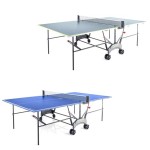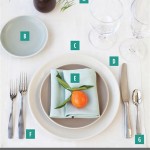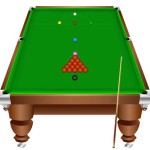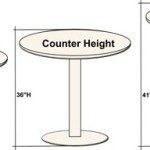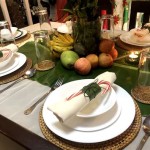World Market Dining Tables: A Comprehensive Overview
World Market, a retail entity known for its eclectic and globally sourced merchandise, offers a diverse array of dining tables suitable for various aesthetic preferences and spatial constraints. Understanding the key characteristics of these tables, including their materials, styles, and functionality, is essential for making an informed purchase. This article presents an expository overview of World Market dining tables, equipping potential buyers with the knowledge necessary to select a table that aligns with their needs and design vision.
Materials and Construction of World Market Dining Tables
The construction materials used in World Market dining tables significantly influence their durability, aesthetic appeal, and price point. A common material is solid wood, particularly acacia, mango, and pine. These woods provide a natural grain and warmth, often treated with various finishes to enhance their appearance and protect them from wear and tear. Acacia, known for its durability and water resistance, is frequently used in outdoor dining tables offered by World Market, although it is also seen in indoor options. Mango wood offers a unique grain pattern and is often stained to create rich, warm tones. Pine, being a softer wood, is generally used in more rustic or farmhouse-style tables, often painted or distressed to achieve a specific aesthetic.
Beyond solid wood, World Market also features dining tables incorporating engineered wood products such as MDF (Medium-Density Fiberboard) and plywood. These materials offer greater stability and resistance to warping compared to solid wood, particularly in large tabletops. They are typically finished with veneers, allowing for a wider range of surface designs and textures. These options are often more budget-friendly than solid wood alternatives.
Metal is another crucial element in the construction of World Market dining tables. It is commonly used for table legs and frames, providing structural support and contributing to the overall aesthetic. Iron, steel, and aluminum are frequently employed, often with powder-coated finishes to enhance durability and prevent rust. Powder coating offers a wide variety of color options, allowing for seamless integration with various design schemes.
Glass tabletops are less frequently seen, but they offer a sleek and modern alternative to wood and other solid surfaces. World Market may offer glass-topped dining tables, often with metal or wooden bases. These tables create an open and airy feel in a dining room, and the tempered glass used in their construction offers increased safety and durability.
The construction techniques employed also contribute to the quality and longevity of the dining tables. Dovetail joints, mortise and tenon joints, and other traditional woodworking methods enhance the structural integrity of solid wood tables. Metal frames are typically welded or bolted together, ensuring a stable and robust foundation. The quality of the hardware, such as screws and connectors, also plays a critical role in the overall durability of the table.
Styles and Design Aesthetics of World Market Dining Tables
World Market specializes in offering dining tables that reflect a diverse range of design aesthetics, catering to a broad customer base. From rustic farmhouse styles to modern minimalist designs and globally inspired pieces, the retailer provides options for nearly every taste. Farmhouse style dining tables often feature distressed wood finishes, turned legs, and plank-style tops, evoking a sense of warmth and rustic charm. These tables are typically large and designed to accommodate family gatherings.
Modern dining tables, on the other hand, tend to feature clean lines, minimalist silhouettes, and a focus on functionality. These tables often incorporate metal and glass elements, creating a sleek and contemporary aesthetic. They may have pedestal bases, splayed legs, or other unique design features that contribute to their modern appeal.
Globally inspired dining tables reflect the retailer's commitment to sourcing products from around the world. These tables may feature intricate carvings, vibrant colors, and unique materials that are characteristic of specific cultures. For example, a dining table crafted from reclaimed teak wood with a hand-carved base might evoke a Southeast Asian aesthetic, while a table with a mosaic tile tabletop could reflect Mediterranean influences.
Beyond these broad categories, World Market also offers dining tables that fit within more specific design styles, such as industrial, bohemian, and coastal. Industrial-style tables often feature metal frames, distressed wood tops, and exposed hardware, reflecting the utilitarian aesthetic of factories and warehouses. Bohemian tables may incorporate natural materials, such as rattan and bamboo, along with vibrant colors and eclectic patterns. Coastal-style tables typically feature light wood finishes, nautical-inspired details, and a relaxed, airy feel.
The shape of the dining table also plays a significant role in its overall aesthetic and functionality. Rectangular tables are the most common type, offering ample seating space and versatility in arrangement. Round tables promote conversation and create a more intimate dining experience. Square tables are suitable for smaller spaces and can be used in both formal and informal settings. Oval tables offer a compromise between rectangular and round shapes, combining the seating capacity of a rectangle with the conversational benefits of a circle.
Functionality and Considerations for Space
Beyond aesthetics, the functionality of a dining table is a crucial consideration. The size of the table should be proportionate to the size of the dining room and the number of people who will typically be seated at it. It is important to measure the dining space accurately before making a purchase to ensure that the table will fit comfortably and allow for adequate circulation around it.
Expandable dining tables offer a practical solution for those who occasionally need to accommodate larger groups. These tables typically feature leaves that can be added or removed to adjust the table's size as needed. Expandable tables are particularly useful for apartment living or smaller dining rooms where space is at a premium.
The height of the dining table is another important factor to consider. Standard dining table height is typically around 30 inches. However, counter-height tables and bar-height tables are also available, offering a more casual dining experience. It is important to choose dining chairs that are appropriately sized for the table height to ensure comfort and proper posture.
The finish of the dining table should also be considered in terms of its durability and ease of maintenance. A durable finish will protect the table from scratches, spills, and other types of damage. A finish that is easy to clean will simplify maintenance and help to keep the table looking its best. For example, a table with a polyurethane finish is generally more resistant to stains and scratches than a table with an oil-based finish. Some finishes are more heat resistant than others with some finishes reacting negatively to prolonged exposure to excessive heat.
Storage options are another functional aspect to consider. Some dining tables feature built-in storage, such as drawers or shelves, providing a convenient place to store napkins, silverware, and other dining essentials. This can be particularly useful in smaller dining rooms where storage space is limited.
The weight capacity of the dining table is also a critical consideration, particularly for larger tables or those intended for heavy use. It is important to choose a table that can comfortably support the weight of the dishes, food, and people that will be placed on it. Tables with solid wood construction and sturdy metal frames typically offer the highest weight capacity.
Finally, the ease of assembly is an important consideration for many buyers. Some dining tables require extensive assembly, while others are relatively easy to put together. It is important to read the product description carefully to understand the assembly requirements and to ensure that you have the necessary tools and skills to assemble the table yourself, or to factor in the cost of professional assembly.
In conclusion, understanding the materials, styles, and functionality of World Market dining tables is crucial for making an informed purchase. By carefully considering these factors, buyers can select a table that not only complements their design aesthetic but also meets their practical needs and space constraints.

World Market Rectangular Marble Metal Home Dining Table Furniture China Room Made In Com

Cynthia Vintage Walnut Turned Leg Dining Table World Market

Rustic Dining Table Chairs For A Charming Room

Espresso Wood Tobias Dining Table World Market

World Market Lugano Dining Table Cedar Style
World Market Dining Table At The Missing Piece

World Market My Furniture Favorites Halfway Wholeistic

World Market Provence Dining Table Design Ideas

World Market Dining Table At The Missing Piece

Cocofeed Mahogany Verona Dining Set From Cost Plus World Market Cocorice

